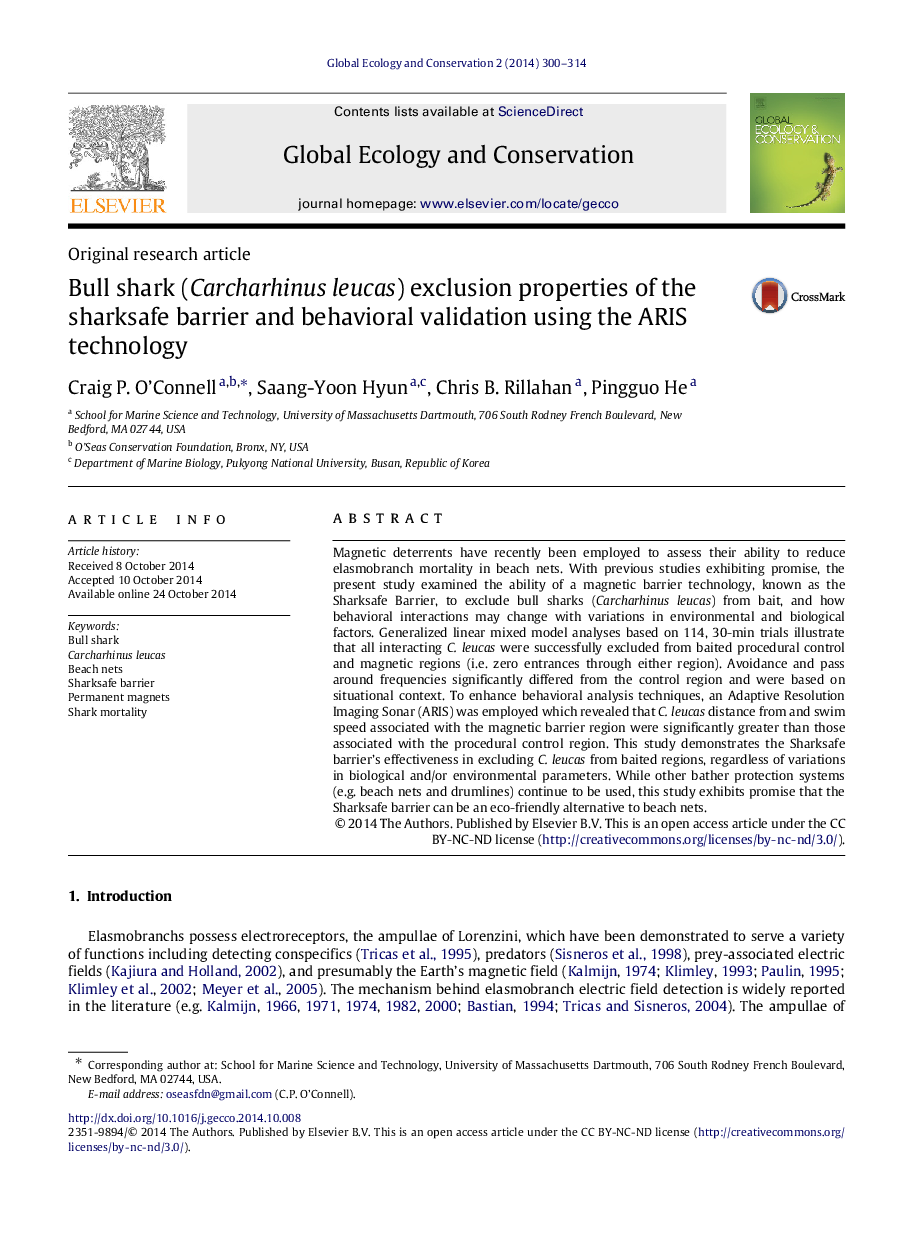| کد مقاله | کد نشریه | سال انتشار | مقاله انگلیسی | نسخه تمام متن |
|---|---|---|---|---|
| 4379692 | 1617665 | 2014 | 15 صفحه PDF | دانلود رایگان |

Magnetic deterrents have recently been employed to assess their ability to reduce elasmobranch mortality in beach nets. With previous studies exhibiting promise, the present study examined the ability of a magnetic barrier technology, known as the Sharksafe Barrier, to exclude bull sharks (Carcharhinus leucas) from bait, and how behavioral interactions may change with variations in environmental and biological factors. Generalized linear mixed model analyses based on 114, 30-min trials illustrate that all interacting C. leucas were successfully excluded from baited procedural control and magnetic regions (i.e. zero entrances through either region). Avoidance and pass around frequencies significantly differed from the control region and were based on situational context. To enhance behavioral analysis techniques, an Adaptive Resolution Imaging Sonar (ARIS) was employed which revealed that C. leucas distance from and swim speed associated with the magnetic barrier region were significantly greater than those associated with the procedural control region. This study demonstrates the Sharksafe barrier’s effectiveness in excluding C. leucas from baited regions, regardless of variations in biological and/or environmental parameters. While other bather protection systems (e.g. beach nets and drumlines) continue to be used, this study exhibits promise that the Sharksafe barrier can be an eco-friendly alternative to beach nets.
Journal: Global Ecology and Conservation - Volume 2, December 2014, Pages 300–314